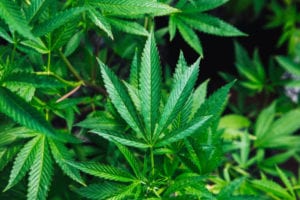Cannabis is such a hot topic these days! But it can certainly be confusing and sometimes even misleading.
This article is designed to address common misconceptions about cannabis and to answer questions that you may have regarding cannabis.
First, we’ll go through common terms that are used when people discuss cannabis.
 What is Cannabis?
What is Cannabis?
Cannabis is a type of plant and there are three commonly recognized species:
- Cannabis sativa
- Cannabis indica
- Cannabis ruderalis
Cannabis sativa is the primary species that humans have learned to harvest for medicinal purposes and to make marijuana and hemp.
What is the difference between Marijuana and Hemp?
They are both parts of the Cannabis plant, but they are grown and harvested differently.
Hemp is widely used for a variety of industrial purposes, such as fiber for clothing, paper, construction, foodstuffs (hemp oil, milk, seed), soap, and auto parts.
Marijuana, on the other hand, is used as a medicine or personal recreation.
The primary medical difference – and why marijuana is used for recreation, but not hemp – is that hemp contains less than 0.3% THC while marijuana contains more than 0.3% THC.

Okay…. what is THC??
THC is Delta-9-Tetrahydrocannabinol. THC is found with its sister compound CBD (Cannabidiol) in Cannabis, and so a discussion of one necessitates discussion of the other.
The Cannabis plant contains many active compounds. The most talked about are THC, the psychoactive compound which causes people to “get high,” and CBD. CBD is best known for its ability to decrease inflammation, reduce seizure activity and decrease anxiety.
How do CBD and THC do this in the body?
Well, they do this by acting on the Endocannabinoids System.
ENDO (typically means internal or within)
CANNABINOIDS (the chemicals that act on the specific cannabinoid receptors in the body)
The Endocannabinoids system (ECS) is an internal biological system. All animals have it.
ECS is a newly discovered system scientifically, found in the 1990s (It’s so recent!) The main function of ECS is to maintain homeostasis in the body. ECS has its own system of receptors throughout the nervous system and its own neurotransmitters.
The main receptors in the ECS are named CB1 and CB2.
CB1 receptors: Located primarily in the central nervous system (Brain!) This explains THC’s psychoactive properties.
CB2 receptors: Located in the immune system.
Whereas THC has a high affinity for CB1 and CB2 receptors, CBD has a low affinity and is an antagonist for both. Thus, CBD appears to have protective effects against the psychoactive properties of THC. Of interest is the fact that CBD has demonstrated effects in reducing inflammation, pain, seizure, and anxiety. The effects have now been proven through research studies. However, its mechanism of action is still not fully understood.
The natural inquiry then becomes, “why not extract and consume only CBD?” This is answered by the Entourage Effect, which is the principle that individual components work to enhance each other. In this instance, the additive effects of all the chemical compounds within the cannabis plant (terpenes, other cannabinoids, fatty acids) all work together to enhance its effects.
Summary:
- Cannabis is a plant: Hemp and Marijuana are varieties of this plan
- Hemp has < 0.3% THC Marijuana has > 0.3% THC
- THC is what causes the psychoactive effects
- CBD is best known for its therapeutic effects
- They work by acting on the ECS (Endocannabinoid system); it’s a relatively recent discovery.
- All animals have this system. There is still a lot we don’t know about this system.
- Whole plant extract is more therapeutic than a single compound.

